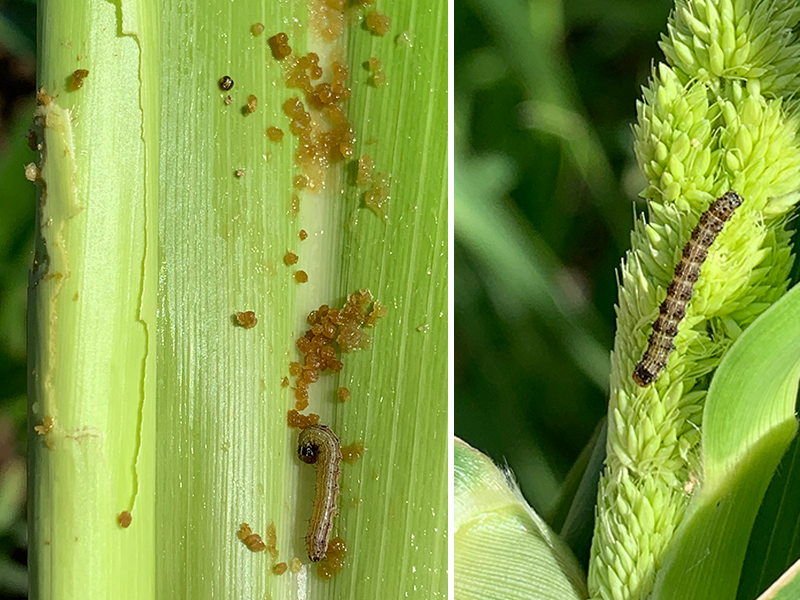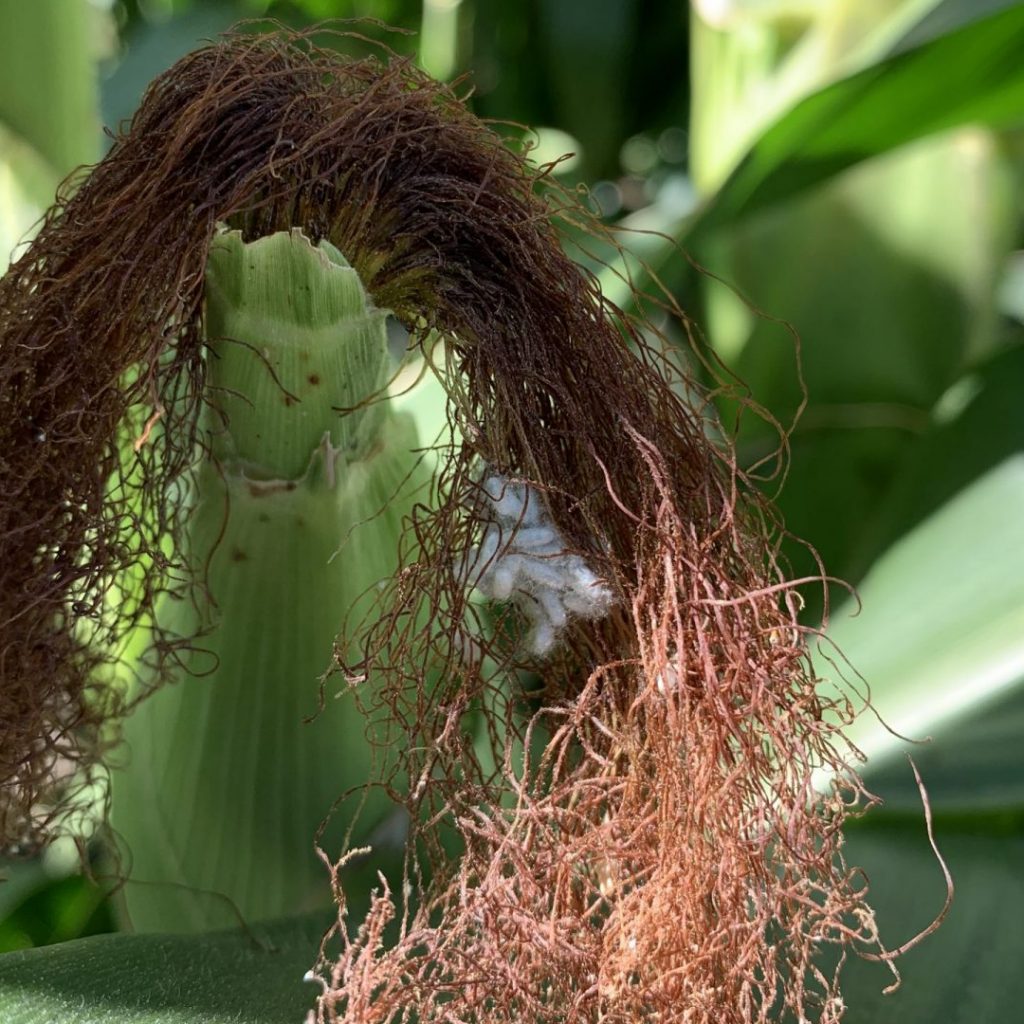With the detection of fall armyworm (FAW, Spodoptera frugiperda) throughout Queensland and now in major cropping regions in NSW, growers are wondering about the best management options for protecting their summer cereal crops.

FAW larva (left). Maize leaf unrolled to show damage and frass. Helicoverpa larva (right) on millet head. Photos by Melina Miles.
The latest research from NSW DPI provides information that can assist growers in deciding the most appropriate course of action for managing outbreaks of fall armyworm if sprays are warranted.
Importantly, parasitism levels of FAW have been quite high in crops and growers are encouraged to take advantage of this situation by managing FAW larval infestations with regular monitoring and basing spray decisions on damage thresholds to avoid unnecessary sprays.
Given the high risk of resistance in fall armyworm, growers are also encouraged to rotate insecticides with different modes of action to avoid selection for resistance in this pest, as well as in other pest species that may also be present in crops.
With support from the CRDC, NSW DPI has established the toxicity profile of several insecticide groups currently registered under permit for fall armyworm. A key priority of this research has been the development of a rapid field test to increase monitoring capacity of selective insecticides indoxacarb, chlorantraniliprole and emamectin benzoate.
Key findings from the research are:
| Product | Efficacy on fall armyworm |
| chlorantraniliprole (e.g. Altacor®; Group 28) |
Similar level of toxicity in H. armigera and FAW. |
| emamectin benzoate (e.g. Affirm®; Group 6A) |
Similar level of toxicity in H. armigera andFAW. |
| indoxacarb (e.g. Steward®; Group 22) |
Toxicity is significantly lower in FAW compared with susceptible H. armigera but this is unlikely to be due to resistance and probably represents a naturally higher tolerance to indoxacarb inFAW. |
| synthetic pyrethroids (SPs; Group 3A) | FAW is 30-60 times less sensitive to alpha-cypermethrin and gamma-cyhalothrin compared with susceptible H. armigera. Based on our experience with H. armigera with similar levels of SP resistance, it is therefore highly unlikely that field rates of these insecticides will control FAW, even under optimal spray conditions.
There is strong evidence to support metabolic (not targe site) resistance to SP in FAW. Metabolic resistance is an important mechanism which is also known to confer very high levels of SP resistance in H. armigera. |
| Methomyl (carbamate; Group 1A) | There is a small but significant reduction in sensitivity to methomyl in FAW larvae compared with H. armigera which may result in unsatisfactory control, particularly if spray conditions are not optimal. |
Diagnostic concentrations of indoxacarb, chlorantraniliprole and emamectin benzoate have now been established for detecting future changes in resistance to these insecticides.
Regular monitoring and management of FAW with selective insecticides targeted on early instars (before larvae become entrenched in whorls and ears of maize) will provide the best results.
Parasitic wasp species have been observed in the field to be very efficient natural enemies of FAW larvae. Therefore, the use of selective insecticide options (not SP or carbamate) will conserve beneficial insects and help to suppress populations of FAW.

White parasitoid wasp cocoons on tassels. Photo by Melina Miles.
As with any insect pest, there is considerable potential for selection of resistance in FAW to selective insecticides. The overuse of selective insecticides could also threaten Helicoverpa resistance management if there is an increase in the frequency of spraying in broadacre crops where the two species occur together.
Although there is currently no resistance management strategy (RMS) for fall armyworm, the key principles of resistance management and IPM should be applied when making spray decisions, including regular monitoring to identify early outbreaks, timely applications of selective insecticides on above-threshold populations, and rotating insecticides with different modes of action.
Following these guidelines will help to optimise the cost of applications and control of FAW while making the most of natural enemy populations present in the crop, the benefits of which will be destroyed by broad-spectrum insecticides that are unlikely to provide effective control.

To date, investigations of both spinetoram and spinosad have found toxicity to be equivalent in FAW and H. armigera, which would be consistent with field observations.
Has any work been conducted with the efficacy of Spinetoram on FAW as feedback from the field is suggesting this is an expensive, yet effective option for FAW control when pressure is high?